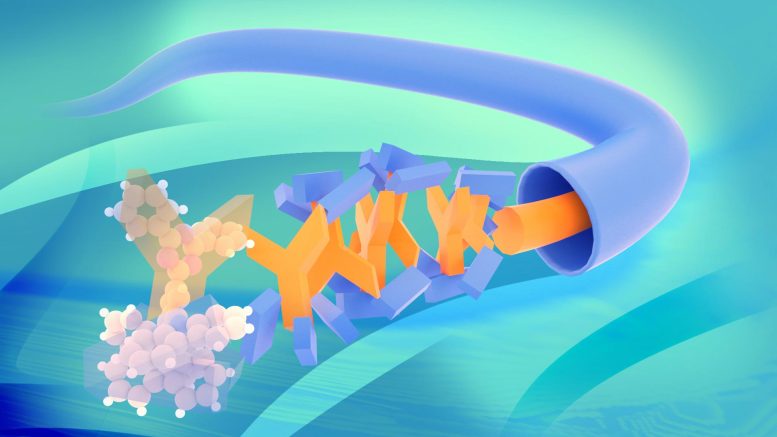
Due to the special chemical structure, the molecules arrange themselves in a kind of spiral. The result: The electron-conducting core is shielded, which leads to higher efficiency of the organic light-emitting diode. Credit: MPI-P
New material concept eliminates the unwanted effects of impurities in organic light-emitting diodes.
Researchers at the Max Planck Institute have created a new molecule structure that enhances the efficiency of blue OLEDs. Their breakthrough can simplify the design and production process of these OLEDs.
Organic light-emitting diodes (OLEDs) have become a common feature in many modern devices, from televisions to smartphones. In order to display an image, OLEDs need to project light in the three primary colors: red, green, and blue. Notably, the manufacturing of light-emitting diodes for blue light is particularly challenging due to its high-energy physical properties, which complicate the development of suitable materials.
A significant factor in the performance of these materials is the presence of small amounts of impurities that are impossible to completely remove. Such impurities, like oxygen molecules, impede the movement of electrons within the diode, interfering with the light-generation process. When an electron is trapped by these impurities, its energy is converted into heat instead of light. This phenomenon, known as “charge trapping,” primarily affects blue OLEDs, leading to a substantial reduction in their efficiency.
A team led by Paul Blom, director at the Max Planck Institute for Polymer Research, recently addressed the issue of charge trapping by using a new class of molecules. These molecules comprise two chemical parts: one part facilitates electron conduction, while the other part is not sensitive to impurities. By manipulating the chemical structure of the molecule, a special spatial arrangement is achieved: When several molecules are joined, they form a kind of “spiral” – that means the electron-conducting part of the molecules forms the inner part, which is shielded on the outside by the other part of the molecules. This resembles, in a molecular way, a coaxial cable with an electron conducting inner core and an outer part shielding the core.
The cladding thus forms a kind of “protective layer” for the electron-conducting core, shielding it from the intrusion of oxygen molecules. Thus, the electrons can move fast and freely along the central axis of the spiral without being trapped by obstacles, similar to cars on a highway without crossings, traffic lights or other obstacles.
“One of the special things about our new material is that the absence of losses due to impurities and resulting efficient electron transport can greatly simplify the design of blue OLEDs, while maintaining a high efficiency,” says Paul Blom.
With this innovative approach, the researchers hope to significantly simplify the production of blue light-emitting diodes. Their results have been published in the journal Nature Materials, marking an important stride toward the advancement of OLED technology.
Reference: “Elimination of charge-carrier trapping by molecular design” by Oskar Sachnik, Xiao Tan, Dehai Dou, Constantin Haese, Naomi Kinaret, Kun-Han Lin, Denis Andrienko, Martin Baumgarten, Robert Graf, Gert-Jan A. H. Wetzelaer, Jasper J. Michels and Paul W. M. Blom, 29 June 2023, Nature Materials.
DOI: 10.1038/s41563-023-01592-3

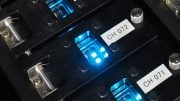


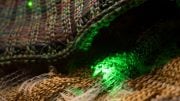
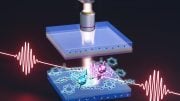
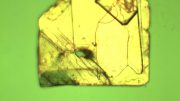

Be the first to comment on "Molecular Highways: A Breakthrough in Organic Light-Emitting Diodes (OLEDs)"